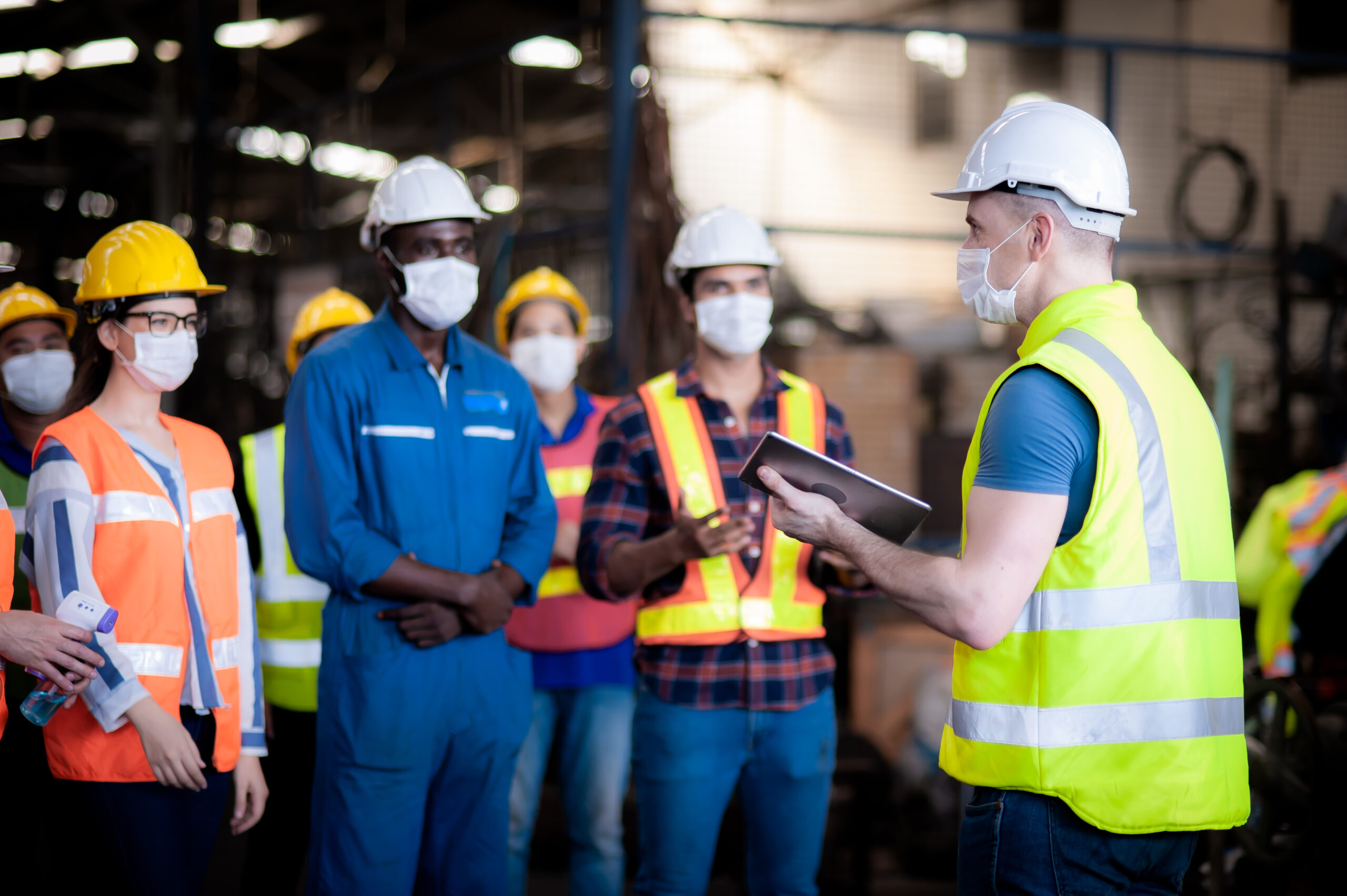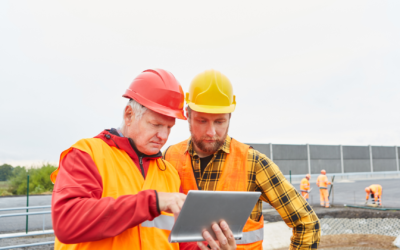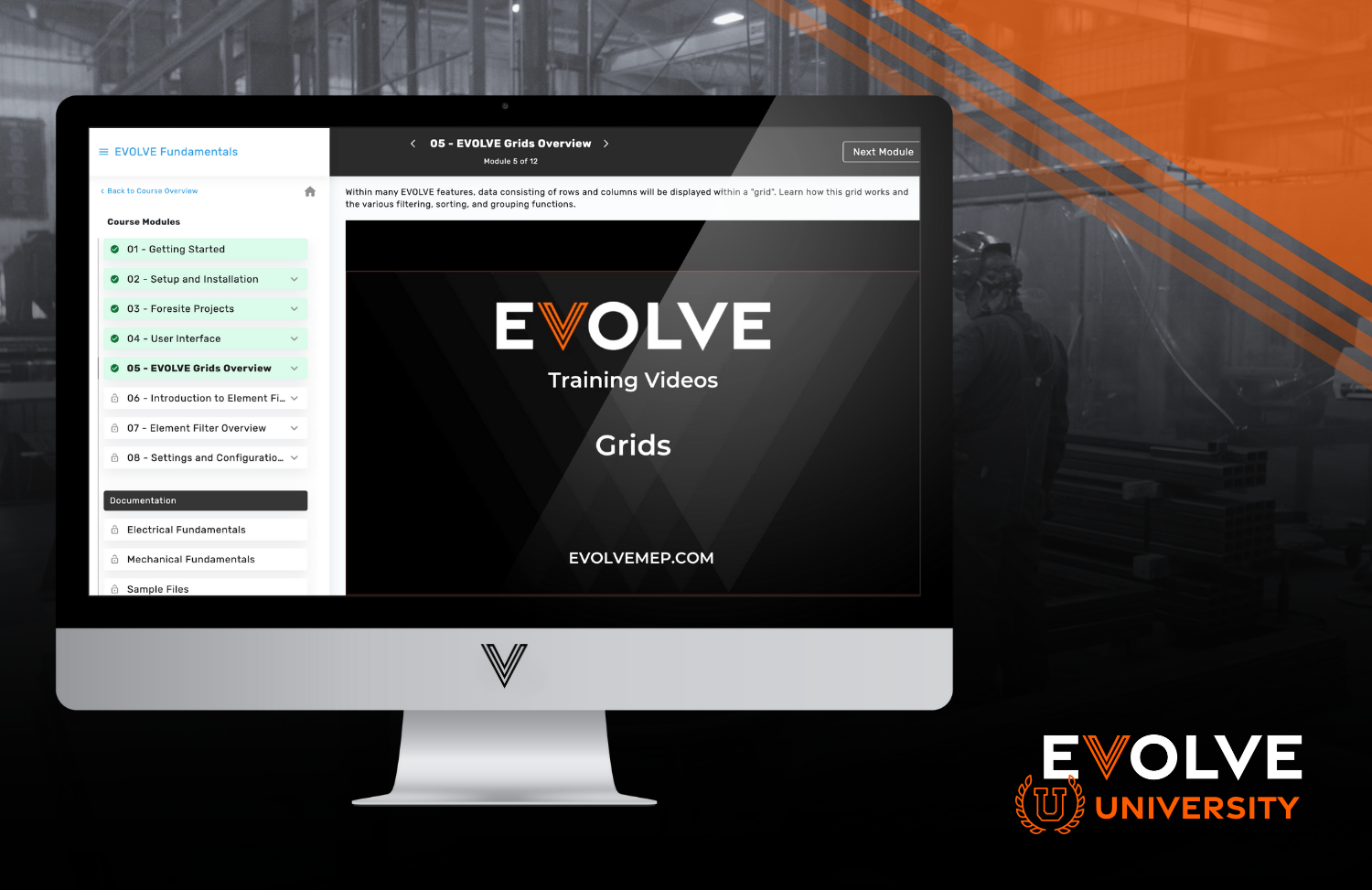Perhaps the one sign every casual observer notices on a job site is the one proclaiming “__ number of days since our last accident.” It’s a point of pride with contractors to have a safe worksite. It not only reflects the project leadership’s commitment to safety; it also shows the workers’ professionalism and attention to details.
The safety of your team is paramount for companies whether you’re an office-based design company or an in-the-field subcontractor. Their health and well-being are a cornerstone of a company's operations: your workers are your most valuable assets, and you rightfully guard their safety.
Planning for safety on the job starts before the first shovel of dirt is turned over. It’s a process built on the commitment of the stakeholders to incorporate safety procedures from the start, on every project. From the time your team is assembled, safety should be the top priority, and it should be addressed as such. There are many ways workers on a project can avoid accidents and injury on the jobsite.
The same BIM data can be used to populate other technologies like Virtual Reality (VR) and Augmented Reality (AR) that can give a more complete and realistic image of the project, allowing teammates to explore the structure and the job more thoroughly.
Rehearse, review and display emergency actions: As much as you can plan to have your worksite run safely, accidents will happen. Many times, the severity of the accident can be lessened through the emergency plans put in place by management. This can prevent an accident from being a tragedy. By going over emergency procedures--including how to evacuate a site, where to find emergency equipment, and whom to contact in case of an emergency--you team can be prepared for unplanned contingencies at the jobsite or office.
While everyone hopes these plans never have to be enacted, with your team aware of emergency plans, a small incident doesn’t explode into a major catastrophe impacting lives, production timetables, or the bottom line.
Take safety guidelines seriously: Whether in the shop or on the job site, safety guidelines are there for a reason. If management is lax about enforcing safety protocols like wearing eye protection, steel toed shoes or hardhats, you’re inviting a problem in the future because your team members will also ignore them. Inevitably, someone will get injured because they didn’t adhere to a precaution, either not wearing protective gear or going into a restricted area where they’re not paying attention to action around them. Strict enforcement may seem like it’s parental, but it’s for the benefit of your company, your team, and your workers.
By “laying down the law” early in a project that safety measures will be strictly obeyed, you are signaling to your team that there are no shortcuts. You’re also looking out for their best interests.
By instituting guidelines and practices that dictate where materials are stored and how they’re managed, you can avoid unnecessary hazards and troubles on the job site and in the office. Making organization part of your company’s routine eliminates obstacles in the workplace and reduces the risk of material and personal damage.
Remember workers are human: Injuries happen when people try to do too much: everything from exhaustion to overexertion can lead to mistakes and injuries. Sometimes, those injuries aren’t caused by actually doing something, but merely attempting to do something: backs, necks, arms and legs can all be injured by trying to pick up a piece of material that is too heavy or too unwieldy for one person to handle.
Make sure your labor is equal to the job at hand--and preferably a little more than the job needs. When lifting, moving or adjusting parts or equipment, conducting maintenance on machinery, or installing elements into a building, make sure to schedule enough manpower to handle the task safely. Clearly mark the weight of objects that are to be handled, and when possible, note how many people are needed to safely complete the task--including people to steady equipment like ladders.
Bionics are here, and they’re affordable: A new field developing in construction is the use of bionics, or augmentation, to assist workers do their tasks for longer periods of time with reduced fatigue and risk of injury. Companies like Hilti, Ekso Bionics and Sarcos have adapted technology used in the robotics field to help patients with paralysis or muscle atrophy to the construction industry. New equipment, from full-body suits to gear for the upper body, can amplify a worker’s strength and endurance. Full-body mechanics allow workers to lift significantly more weight without strain, while upper body devices help to reduce muscle strain and fatigue for repetitive tasks where a worker repeatedly raises his arms above his head. With some systems costing just a few hundred dollars, investing in robotics can improve performance while simultaneously reducing the risk of injury.
Even if you don’t want to go all in with bionics; braces, gloves and back supports can provide workers with additional support, protection and structure to avoid some injuries caused by repetitive actions that lead to many workers comp claims and early retirements from the construction industry.
Abate environmental hazards: Construction projects can kick up a lot of dust and debris. Materials mixed on site--epoxies, concrete, adhesives, etc.--can lead to airborne contaminants that can injure and sicken workers, both immediately and after long-term exposure. Regardless of if you’re working on a small renovation project or a major new construction, the proper handling of these materials can avoid sickening individuals involved in handling those chemicals as well as everyone at the site.
To avoid problems, ensure that the chemicals are handled only by people certified to do so. Reinforce the requirement to wear protective gear and handle those materials only in properly ventilated or insulated places. Constantly monitor air quality and water runoff to safeguard against leaks, and properly store chemicals so they are kept out of reach of unauthorized personnel or worse, trespassers on the site.
Track workers on site: Nobody wants to think about a catastrophic accident on a job site, but unfortunately, they do happen. It’s best to be prepared for them when they do, rather than regret not taking steps after. On major construction projects, hundreds of people could be working when something unimaginable happens: a tornado hits, there’s a lightning strike, or a crane collapses. When those disasters occur, there is often a period of confusion about who was on-site and where, leading first responders to sometimes lose valuable minutes searching for people who may or may not be victims of the disaster.
Companies are increasingly using personnel trackers that utilize RF or Bluetooth technology to keep track of the location of people on their job sites, as well as to control access to various points on the site. These trackers, like those used by skiers on slopes potentially impacted by avalanches, can triangulate the location of all members of your team. Should someone become trapped or incapacitated, rescuers can find them and with some devices, communicate with them.
No job is a complete success unless everyone working on the project goes home healthy at the end of the day. By reviewing your safety protocols at the start of the project and every day the project runs, you’ll make a major investment for your company, your team and your stakeholders that will not only save money, but it will save lives as well.
The safety of your team is paramount for companies whether you’re an office-based design company or an in-the-field subcontractor. Their health and well-being are a cornerstone of a company's operations: your workers are your most valuable assets, and you rightfully guard their safety.
Planning for safety on the job starts before the first shovel of dirt is turned over. It’s a process built on the commitment of the stakeholders to incorporate safety procedures from the start, on every project. From the time your team is assembled, safety should be the top priority, and it should be addressed as such. There are many ways workers on a project can avoid accidents and injury on the jobsite.
Planning for challenges
Use BIM model to identify challenging tasks: One of the major advantages to using modeling is that it gives you a comprehensive overview of the project. This allows designers and contractors to identify areas of the project where jobs may increase risk, such as areas of limited access, stages that will require significant coordination between contractors, or installations requiring heavy equipment. With the foreknowledge that these tasks will take additional care to be done safely, your team can take steps to minimize problems and make sure the work gets done properly and safely.The same BIM data can be used to populate other technologies like Virtual Reality (VR) and Augmented Reality (AR) that can give a more complete and realistic image of the project, allowing teammates to explore the structure and the job more thoroughly.
Rehearse, review and display emergency actions: As much as you can plan to have your worksite run safely, accidents will happen. Many times, the severity of the accident can be lessened through the emergency plans put in place by management. This can prevent an accident from being a tragedy. By going over emergency procedures--including how to evacuate a site, where to find emergency equipment, and whom to contact in case of an emergency--you team can be prepared for unplanned contingencies at the jobsite or office.
While everyone hopes these plans never have to be enacted, with your team aware of emergency plans, a small incident doesn’t explode into a major catastrophe impacting lives, production timetables, or the bottom line.
Take safety guidelines seriously: Whether in the shop or on the job site, safety guidelines are there for a reason. If management is lax about enforcing safety protocols like wearing eye protection, steel toed shoes or hardhats, you’re inviting a problem in the future because your team members will also ignore them. Inevitably, someone will get injured because they didn’t adhere to a precaution, either not wearing protective gear or going into a restricted area where they’re not paying attention to action around them. Strict enforcement may seem like it’s parental, but it’s for the benefit of your company, your team, and your workers.
By “laying down the law” early in a project that safety measures will be strictly obeyed, you are signaling to your team that there are no shortcuts. You’re also looking out for their best interests.
On site safety
Keep work areas organized: Frequently, accidents and injuries occur because someone or something is in the wrong place at the wrong time. Piles of materials laying around a construction site or a shop floor constitute a trip hazard. Unsecure stacks of supplies collapse, endangering all who happen to be around and causing disruption to the job site and schedule. Unneeded traffic--both vehicle and human--adds additional confusion and risk on the job.By instituting guidelines and practices that dictate where materials are stored and how they’re managed, you can avoid unnecessary hazards and troubles on the job site and in the office. Making organization part of your company’s routine eliminates obstacles in the workplace and reduces the risk of material and personal damage.
Remember workers are human: Injuries happen when people try to do too much: everything from exhaustion to overexertion can lead to mistakes and injuries. Sometimes, those injuries aren’t caused by actually doing something, but merely attempting to do something: backs, necks, arms and legs can all be injured by trying to pick up a piece of material that is too heavy or too unwieldy for one person to handle.
Make sure your labor is equal to the job at hand--and preferably a little more than the job needs. When lifting, moving or adjusting parts or equipment, conducting maintenance on machinery, or installing elements into a building, make sure to schedule enough manpower to handle the task safely. Clearly mark the weight of objects that are to be handled, and when possible, note how many people are needed to safely complete the task--including people to steady equipment like ladders.
Bionics are here, and they’re affordable: A new field developing in construction is the use of bionics, or augmentation, to assist workers do their tasks for longer periods of time with reduced fatigue and risk of injury. Companies like Hilti, Ekso Bionics and Sarcos have adapted technology used in the robotics field to help patients with paralysis or muscle atrophy to the construction industry. New equipment, from full-body suits to gear for the upper body, can amplify a worker’s strength and endurance. Full-body mechanics allow workers to lift significantly more weight without strain, while upper body devices help to reduce muscle strain and fatigue for repetitive tasks where a worker repeatedly raises his arms above his head. With some systems costing just a few hundred dollars, investing in robotics can improve performance while simultaneously reducing the risk of injury.
Even if you don’t want to go all in with bionics; braces, gloves and back supports can provide workers with additional support, protection and structure to avoid some injuries caused by repetitive actions that lead to many workers comp claims and early retirements from the construction industry.
Abate environmental hazards: Construction projects can kick up a lot of dust and debris. Materials mixed on site--epoxies, concrete, adhesives, etc.--can lead to airborne contaminants that can injure and sicken workers, both immediately and after long-term exposure. Regardless of if you’re working on a small renovation project or a major new construction, the proper handling of these materials can avoid sickening individuals involved in handling those chemicals as well as everyone at the site.
To avoid problems, ensure that the chemicals are handled only by people certified to do so. Reinforce the requirement to wear protective gear and handle those materials only in properly ventilated or insulated places. Constantly monitor air quality and water runoff to safeguard against leaks, and properly store chemicals so they are kept out of reach of unauthorized personnel or worse, trespassers on the site.
Track workers on site: Nobody wants to think about a catastrophic accident on a job site, but unfortunately, they do happen. It’s best to be prepared for them when they do, rather than regret not taking steps after. On major construction projects, hundreds of people could be working when something unimaginable happens: a tornado hits, there’s a lightning strike, or a crane collapses. When those disasters occur, there is often a period of confusion about who was on-site and where, leading first responders to sometimes lose valuable minutes searching for people who may or may not be victims of the disaster.
Companies are increasingly using personnel trackers that utilize RF or Bluetooth technology to keep track of the location of people on their job sites, as well as to control access to various points on the site. These trackers, like those used by skiers on slopes potentially impacted by avalanches, can triangulate the location of all members of your team. Should someone become trapped or incapacitated, rescuers can find them and with some devices, communicate with them.
No job is a complete success unless everyone working on the project goes home healthy at the end of the day. By reviewing your safety protocols at the start of the project and every day the project runs, you’ll make a major investment for your company, your team and your stakeholders that will not only save money, but it will save lives as well.





